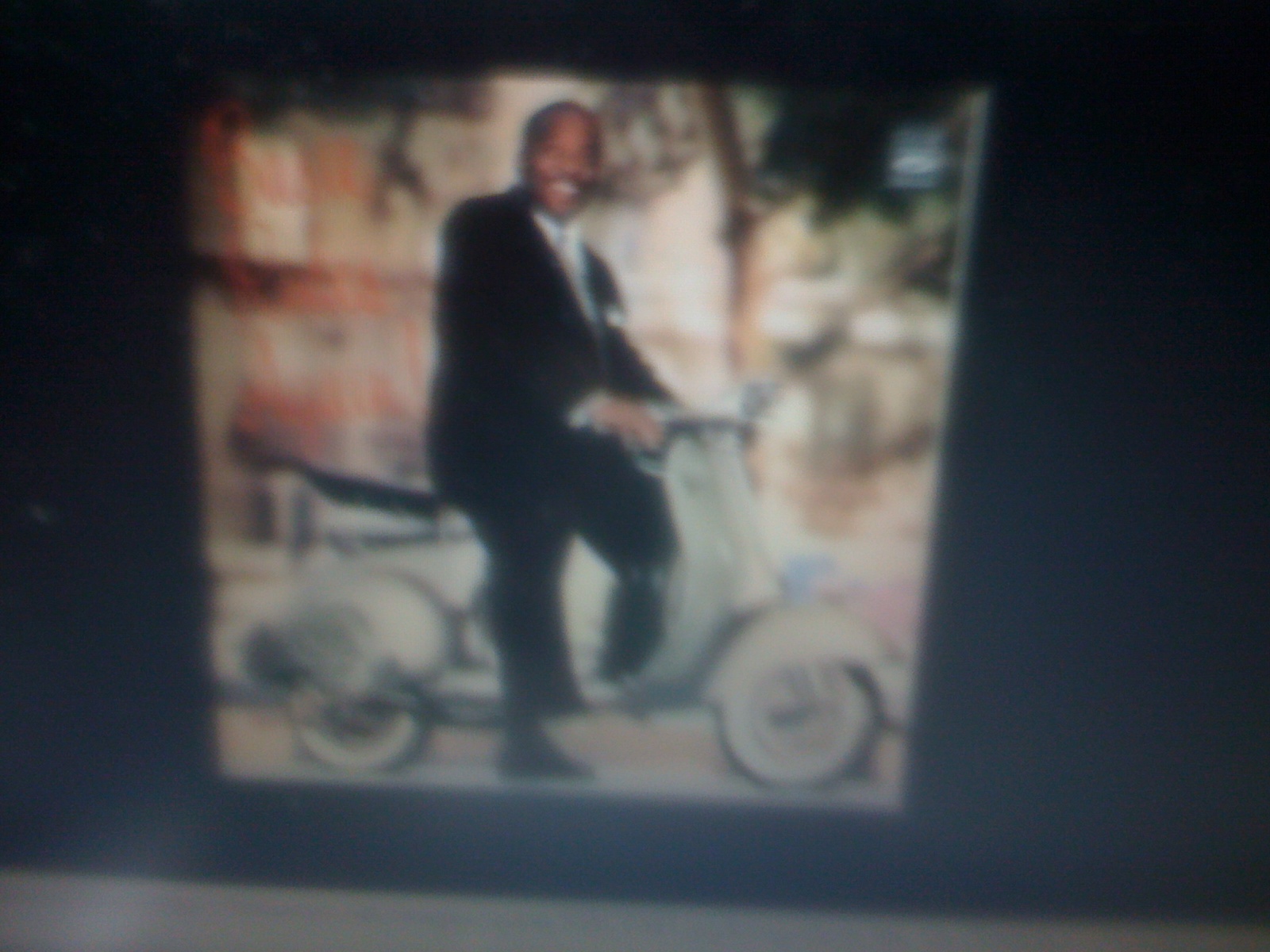| BLACK SOCIAL HISTORY | |
|---|---|
| COUNT BASIE | |
That year Basie formed his own jazz orchestra, and in 1936 took them to Chicago for a long engagement and their first recording. He led the group for almost 50 years, creating innovations like the use of two "split" tenor saxophones, emphasizing the rhythm section, riffing with a big band, using arrangers to broaden their sound, and others. Many notable musicians came to prominence under his direction, including the tenor saxophonists Lester Young and Herschel Evans, the guitarist Freddie Green, trumpeters Buck Clayton and Harry "Sweets" Edison and singers Jimmy Rushing and Joe Williams. Basie's theme songs were "One O'Clock Jump," developed in 1935 in the early days of his band, and "April In Paris".
Not much of a student in school, Basie dreamed of a traveling life, inspired by touring carnivals which came to town. He finished junior high school but spent much of his time at the Palace Theater in Red Bank, where doing occasional chores gained him free admission to performances.he quickly learned to improvise music appropriate to the acts and the silent movies.
Though a natural at the piano, Basie preferred drums. Discouraged by the obvious talents of Sonny Greer, who also lived in Red Bank and became Duke Ellington's drummer in 1919, Basie at age 15 switched to piano exclusively. Greer and Basie played together in venues until Greer set out on his professional career. By then, Basie was playing with pick-up groups for dances, resorts, and amateur shows, including Harry Richardson's "Kings of Syncopation" When not playing a gig, he hung out at the local pool hall with other musicians, where he picked up on upcoming play dates and gossip. He got some jobs in Asbury Park at the Jersey Shore, and played at the Hong Kong Inn until a better player took his pl
Around 1928, Basie went to Harlem, a hotbed of jazz, where he lived down the block from the Alhambra Theater. Early after his arrival, he bumped into Sonny Greer, who was by then the drummer for the Washingtonians, Duke Ellington's early band. Soon, Basie met many of the Harlem musicians who were "making the scene," including Willie "the Lion" Smith and James P. Johnson.
Basie toured in several acts between 1925 and 1927, including Katie Krippen and Her Kiddies as part of the Hippity Hop show; on the Keith, the Columbia Burlesque, and the Theater Owners Bookers Association (T.O.B.A.) vaudeville circuits; and as a soloist and accompanist to blues singers Katie Krippen and Gonzelle White. His touring took him to Kansas City, St. Louis, New Orleans, and Chicago. Throughout his tours, Basie met many great jazz musicians, including Louis Armstrong. Before he was 20 years old, he toured extensively on the Keith and TOBA vaudeville circuits as a solo pianist, accompanist, and music director for blues singers, dancers, and comedians. This provided an early training that was to prove significant in his later career.
Back in Harlem in 1925, Basie got his first steady job at Leroy's, a place known for its piano players and its "cutting contests." The place catered to "uptown celebrities," and typically the band winged every number without sheet music (using "head arrangements"). He met Fats Waller, who was playing organ at the Lincoln Theater accompanying silent movies, and Waller taught him how to play that instrument. (Basie later played organ at the Eblon Theater in Kansas City). As he did with Duke Ellington, Willie "the Lion" Smith helped Basie out during the lean times by arranging gigs at "house-rent parties," introducing him to other top musicians, and teaching him some piano technique.
In 1928 Basie was in Tulsa and heard Walter Page and his Famous Blue Devils, one of the first big bands, which featured Jimmy Rushing on vocals. A few months later, he was invited to join the band, which played mostly in Texas and Oklahoma. It was at this time that he began to be known as "Count" Basie (see Jazz royalty).
The following year, in 1929 Basie became the pianist with the Bennie Moten band based in Kansas City, inspired by Moten's ambition to raise his band to the level of Duke Ellington's or Fletcher Henderson's. Where the Blue Devils were "snappier" and more "bluesy," the Moten band was classier and more respected, and played in the "Kansas City stomp" style. In addition to playing piano, Basie was co-arranger with Eddie Durham, who notated the music. During a stay in Chicago, Basie recorded with the band. He occasionally played four-hand piano and dual pianos with Moten, who also conducted. The band improved with several personnel changes, including the addition of tenor saxophonist Ben Webster.
When the band voted Moten out, Basie took over for several months, calling the group "Count Basie and his Cherry Blossoms." When his own band folded, he rejoined Moten with a newly re-organized band. When Moten died in 1935 after a surgical procedure, the band unsuccessfully tried to stay together but couldn't make a go of it.
Basie formed a new band that year, which included many Moten alumni, with the important addition of tenor player Lester Young. They played at the Reno Club and sometimes were broadcast on local radio. Late one night with time to fill, the band started improvising. Basie liked the results and named the piece "One O'Clock Jump." According to Basie, "we hit it with the rhythm section and went into the riffs, and the riffs just stuck. We set the thing up front in D-flat, and then we just went on playing in F." It became his signature tune.






























No comments:
Post a Comment